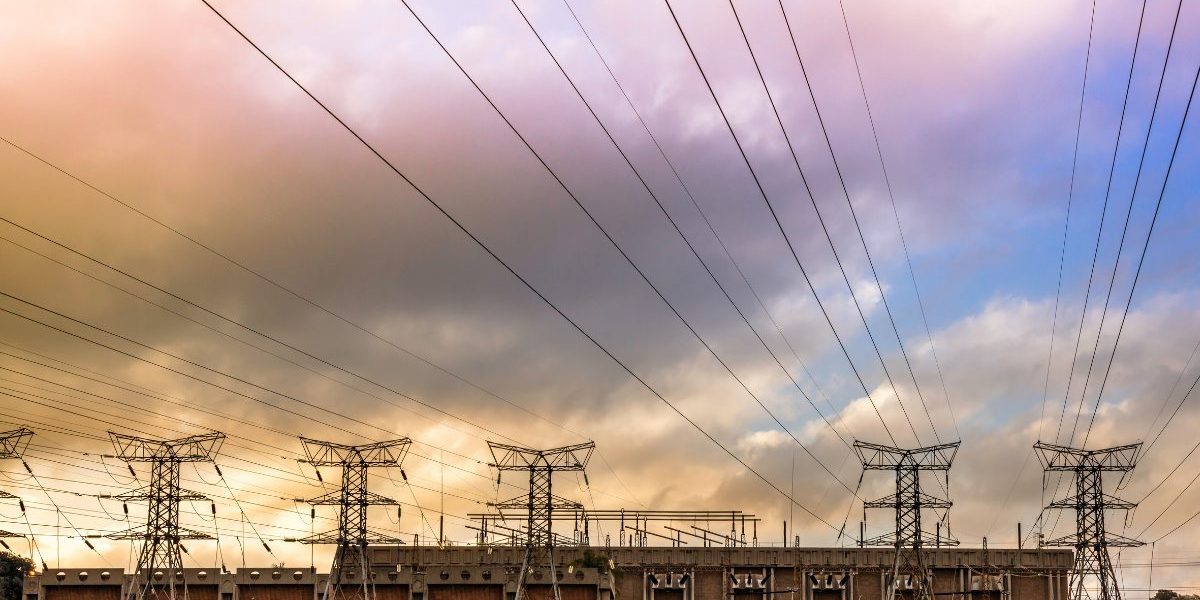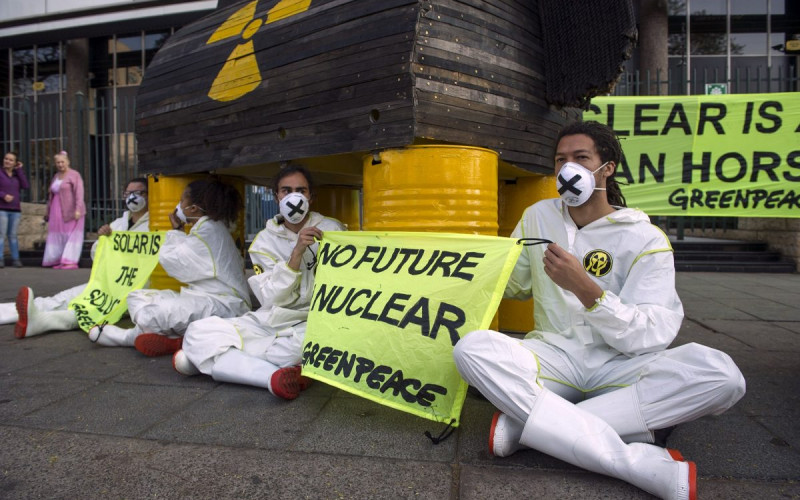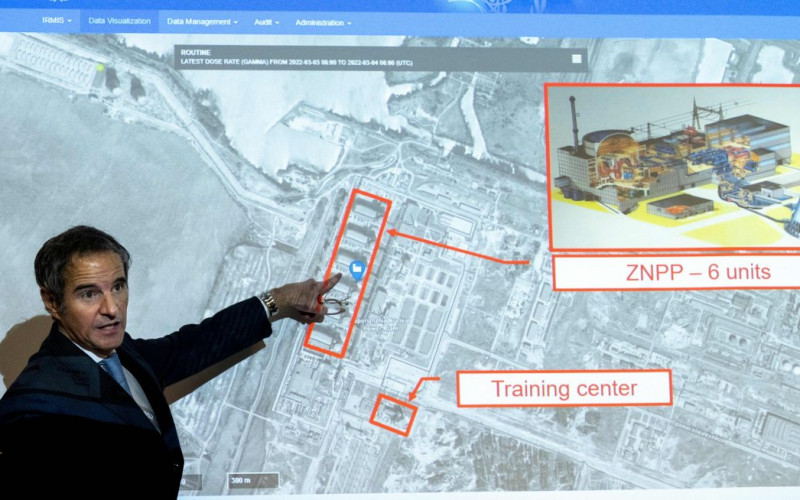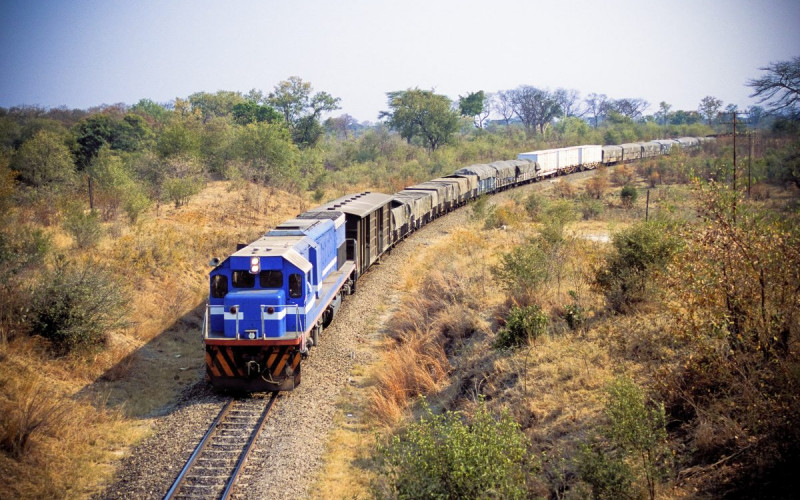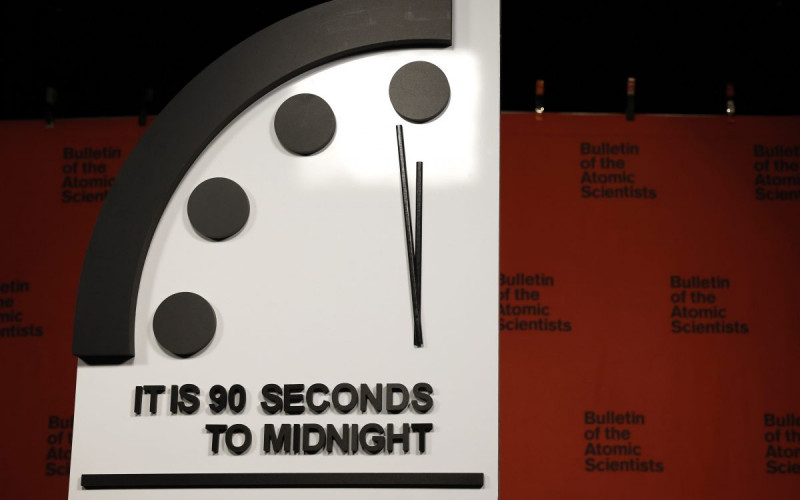Recommendations
- African countries should strive to have as robust an energy mix as possible, taking advantage of their resource endowment.
- A cooperative approach between countries could assist in gathering critical mass for developing nuclear as a viable source of energy.
- As nuclear technology is highly regulated, each country needs to develop robust regulatory infrastructure for their upcoming programmes.
Executive summary
Alternative sources of electrical power generation are currently attracting more attention, primarily due to global demands for sustainability and environmental considerations. Similarly, many African countries are attempting to increase electrification, but face environmental, economic, and legislative challenges owing mainly to their level of development. This paper argues that despite the challenges identified, African countries should include nuclear power as part of their energy mix in order to address the energy gap while complying with global trends of transitioning to cleaner energy. These challenges are not necessarily unique to Africa but may be amplified owing to specific circumstances of the continent such as governance, financing, lack of supporting infrastructure and political will.
Introduction
Africa has been referred to as the ‘dark continent’ from a colonial perspective, but the term has found relevance in terms of inadequate electrification. Despite having vast energy resources, sub-Saharan Africa’s (SSA) 48 countries have the same grid-connected power capacity as Spain,1Africa Energy Portal, ‘Sub-Saharan Africa Power 2018’, October 17 2018, https://africa-energy-portal.org/events/sub-saharan-africapower-2018.but with a population 18 times larger. Furthermore, over half of this capacity is in one country – South Africa. The 2019 Africa Energy Outlook indicates that some 600 million people in Africa do not have access to electricity, while another estimated 900 million Africans use dirty and potentially hazardous fuels to cook.2International Energy Agency (IEA), ‘Africa Energy Outlook 2019’, https://www.iea.org/reports/africa-energy-outlook-2019.This means even those in urban areas (which are more electrified) still use dirty fuel for cooking (typically wood), while electrical power is used for lighting, refrigeration and electronic appliances such as TVs. The UN Sustainable Development Goal (SDG) 7 3UN, ‘’Sustainable Development Goals’, https://sdgs.un.org/goals.calls for access to affordable, reliable, and sustainable modern energy. Furthermore, SDG 13 4UN, ‘Sustainable Development Goals’calls for taking urgent steps to combat climate change and its impact. The continued use of firewood as a source of heat by both rural and urban dwellers has a negative impact on SDG 15 5UN, ‘Sustainable Development Goals’which talks about the management of forests and halting biodiversity loss. The need to look at nuclear energy as a major component of Africa’s future energy mix is imperative, as it does not emit greenhouse gases during operation.6World Nuclear Association, ‘How Can Nuclear Combat Climate Change’, 2016, https://www.world-nuclear.org/nuclear-essentials/how-can-nuclear-combat-climate-change.aspx.
The continent currently only has one nuclear power plant situated in Cape Town, South Africa, although other African countries also aspire to develop nuclear power plants as a step in the right direction. However, there are international agreements and protocols that governments must abide by. The UN General Assembly resolved in 1961 that members should keep the African continent as a de-nuclearised zone, and this principle was also adopted by the Organisation of African Unity (OAU) in 1964. Subsequently, there were many formal meetings that culminated in the signing of the African Nuclear Weapons Free Zone (ANWFZ) Treaty or the Treaty of Pelindaba in 1996. The African Union (AU) established the African Commission on Nuclear Energy (AFCONE) in 2010, a requirement set by the Treaty of Pelindaba, to ensure that member states comply with their treaty obligations.
Following the theme of the ‘Weapons for Peace’ address to the UNGA in 1953 by US President Dwight Eisenhower, the OAU formed the African Regional Cooperative Agreement for Research, Development and Training (AFRA). It was established in 1990 by the International Atomic Energy Agency (IAEA) and African member states to enhance nuclear science and technology on the continent. The Forum of Nuclear Regulatory Bodies in Africa (FNRBA) was formed in 2009 to enhance, strengthen and harmonize broad issues pertaining to nuclear development. These bodies help to coordinate and streamline efforts through networking to capacitate African members to run effective regulation, a key requirement for any nuclear program. There are similar organisations in other regions of the world.
The debate about the role nuclear power should play in the future energy mix is riddled with many myths and misconceptions, but also consists of legitimate concerns by those sceptics who consider the technology to be too risky for the whole world and particularly inappropriate for the African continent. This paper aims to address some of these concerns and make the point that; nuclear energy can assist African countries in the pursuit of their developmental goals, and is a viable option from both an economic perspective, as well as environmental considerations.
Environmental
Environmental considerations have resulted in a global drive towards diminishing greenhouse gas emissions from fossil fuel plants. As discussed earlier, the lack of electrification in Africa is dire. In its quest to address this energy poverty, the continent cannot afford the luxury to being finicky on what source of energy to deploy, especially where it makes economic sense, even if it means shelving commitments to greenhouse gas emissions. Developed countries are making a transition from fossil fuels to clean energy. The majority in Africa will be making a transition from pre-Industrial Revolution sources of energy like firewood and cow dung to some form of more convenient energy sources. Given that Africa has the lowest per capita contribution to greenhouse gases7James Ryan Hogarth, Caroline Haywood and Shelagh Whitley, ‘Low-carbon development in sub-Saharan Africa: 20 cross-sector transitions’, Overseas Development Institute, October 2015, https://www.odi.org/publications/9523-low-carbon-development-subsaharan-africa-20-cross-sector-transitions.in global emissions, the continent should consider its options very carefully before following policies of developed countries that have high electricity penetration levels.
Against this background, nuclear power, which is clean and sustainable, is a possible option. It is a zero-emission source, has a very small land footprint and only produces minimal waste.8US Department of Energy: Office of Nuclear Technology, ‘3 Reasons Why Nuclear is Clean and Sustainable’, April 30, 2020, https://www.energy.gov/ne/articles/3-reasons-why-nuclear-clean-and-sustainable.There is also a general misconception that green energy means renewable energy. A green energy source is defined as one that produces energy with very little or no environmental impact and does not emit greenhouse gases as fossil fuels do (thereby contributing to global warming). Perhaps a somewhat unconventional illustration of the sustainability of nuclear energy is that all energy sources, whether fossil fuels, solar and wind, derive their power from the sun, which itself is a giant nuclear reactor.
There is a general fear about the use of nuclear power, owing mainly to the nuclear bombings of Hiroshima and Nagasaki. Such fears were reinforced more recently by the incidents at Three Mile Island (1979), Chernobyl (1986) and Fukushima (2011). It is therefore incumbent upon the industry to address these fears. Much effort has gone into designing new reactors which would not melt down in the event of a nuclear accident. According to information provided by Our World in Data, nuclear, wind and solar sources have death rates of 0.07, 0.04 and 0.04 deaths per terawatt hour Terra Watt hours(TWh) generated, compared to figures like 32.72 and 4.63 deaths per TWh for brown coal and biomass respectively.9Hannah Ritchie, “Energy”, 2014, OurWorldInData.org, https://ourworldindata.org/energy.Generation IV nuclear technology, which is still under development, is aimed at further addressing the safety issues.
Another issue is the treatment of nuclear waste, which is said to last for thousands of years. Globally, most of the high-level nuclear waste generated (about 70%)10Hannah Patterson, ‘How much radioactive waste is there in the world?’, UK Nuclear Decommissioning Agency August 2, 2019, https://nda.blog.gov.uk/2019/08/02/how-much-radioactive-waste-is-there-in-the-world/is stored at the nuclear power plants. There are discussions about the development of technology to reprocess this waste, referred to as spent fuel, for reuse11World Nuclear Organisation, Processing of Used Nuclear Fuel, Updated 2020, https://www.world-nuclear.org/information-library/nuclear-fuel-cycle/fuel-recycling/processing-of-used-nuclear-fuel.aspx.. Disposal methods, which denote no intention of retrieval, are still being investigated. Deep geological disposal is widely agreed to be the best solution12World Nuclear Organisation, Nuclear Waste/ Storage and Disposal of Radioactive Waste, Updated March 2020, https://www.worldnuclear.org/information-library/nuclear-fuel-cycle/nuclear-waste/storage-and-disposal-of-radioactive-waste.aspx#.. The Onkalo site in Finland is the world’s first deep geological repository of spent fuel.13International Atomic Energy Agency (IAEA), ‘Finland’s Spent Fuel Repository a Real ‘Game Changer’ for the Nuclear Industry, Director General Grossi Says’, November 26, 2020, https://www.iaea.org/newscenter/news/finlands-spent-fuel-repository-a-gamechanger-for-the-nuclear-industry-director-general-grossi-says.Similar nuclear waste disposal sites in Africa would be feasible, especially because deep mining activities are already in place.
Economics
Nuclear power has a distinct characteristic in that the bulk of the costs are incurred during construction which entails financial commitments upfront. As a consequence, funding options have a significant impact on subsequent electricity tariffs. It is imperative that any power generation project be funded from low interest loans. African countries definitely have challenges in sourcing suitable funding. Many analysts argue for the cheapest possible cost energy mix. However, this approach is not necessarily the most beneficial to the economy. A least-cost approach basically looks at the price tag of any proposed project. However, a different option could have a higher price tag but could score other significant benefits for the economy such as job creation (direct, in-direct and induced), which will overall have higher economic benefits than the least-cost option.
According to the UN Under-Secretary-General and Special Adviser on Africa, Christina Duarte,14Matilda Moyo, ‘Africa Can Finance its Development: But Needs Paradigm Shift’, in Africa Renewal: November-December 2020 page 6, https://www.un.org/africarenewal/magazine/november-december-2020/africa-can-finance-its-development-needs-paradigm-shift.
Africa’s challenge is not the absence of liquidity or funds to finance development. Its problems are massive illicit financial flows that are draining funding capacity and the lack of ownership over natural resources, coupled with a whole narrative built around managing poverty instead of development, and depicting Africa as a poor continent in need of help from the international community.
Poverty management tends to focus on matters relating to debt relief and seeking international aid to fund development. A developmental approach focuses on mobilisation of domestic resources and is linked to taking ownership of national resources and the curbing of illicit financial flows, according to Duarte. The continent is resource-rich, but power poor. Professor Misheck Mutize of the University of Cape Town says that African countries are not borrowing too much but rather paying too much for their debts: ‘African governments are paying interest of 5% to 16% on 10-year government bonds, compared to near zero to negative rates in Europe and America’.15Misheck Mutize, ‘African Countries Are Not Borrowing Too Much, They Are Paying Too Much for Debt’, in The Conversation, February 19 2020, https://theconversation.com/african-countries-arent-borrowing-too-much-theyre-paying-too-much-for-debt-131053.
The capacity factor of a generation source is defined as the actual energy generated divided by the maximum possible (as per name plate rating of the plant).16Simon Neill and Reza Hashemi, ‘Fundamentals of Ocean Renewable Energy: Generating Electricity from the Sea’, 2018, Academic Press.There is evidence that per kW (power) installed, nuclear and renewable energy sources create similar jobs during construction but nuclear plants take much longer to build and therefore the jobs last longer.17Ian Emsley, ‘Employment in the Nuclear and Wind Electricity Generating Sectors World Nuclear Association’, July 2020, World Nuclear Association, https://www.world-nuclear.org/getmedia/690859bf-ebe6-43a2-bedd-57ddf47ee3ac/Employment-in-NuclearReport-Final.pdf.aspx.More human resources are needed to operate and maintain nuclear plants over a much longer period than renewables, due to the longer lifespan. Advocates of renewable energy would typically want to count jobs per kWh (energy), knowing that more than three times capacity installation is required to produce the same energy as nuclear, in order to compensate for the low capacity factor of renewable energy sources. According to the US Energy Information Administration nuclear plants have a capacity factor of around 94% compared to 35% wind and 25% solar.18US Department of Energy: Office of Nuclear Technology, ‘Nuclear Power is the Most Reliable Energy Source and It’s Not Even Close’, April 22, 2020, https://www.energy.gov/ne/articles/nuclear-power-most-reliable-energy-source-and-its-not-even-close.
Another typical criticism of nuclear plants is that they take too long to construct and usually overrun budget and time. Small Modular Reactors (SMRs) are being developed, which are cheaper than large scale reactors and take much shorter time to build. This criticism speaks to the project management capability for large nuclear plants. Given the reduced timeline for implementing SMRs, they are aptly suitable for small but growing electricity grids.
Legislative and regulatory
Nuclear technology is highly legislated and regulated. Any country aspiring to embark on a civil nuclear power program needs to develop a robust legislative and regulatory framework. The IAEA is mandated by the UN to guide and advise countries wanting to introduce nuclear power into the energy mix. In order to be ready for this technology, governments need to develop legislation and infrastructure that will enable effective regulation of the industry. Each country is required to have a regulatory body with sovereign powers of regulation and enforcement. There are currently 34 active African members of FNRBA. Although there is only one nuclear power plant operational in Africa, the continent’s regulatory bodies are engaged in other non-power related nuclear activities. Eleven African countries are at different stages of engagement with the IAEA.19Farai Shawn Matiashe, ‘As Africa Looks for clean power, nuclear interest grows’, April 10, 2020, Thomson Reuters Foundation, https://www.reuters.com/article/us-africa-nuclearpower-climate-change-tr-idUSKCN21S03U.
Conclusion
This paper set out to discuss why the peaceful use of nuclear energy makes sense in an African context. Economic and environmental considerations point to the use of nuclear power generation as a viable option to include in the energy mix of African countries. Yet it is also important to bear in mind necessary safety, security, legislative and regulatory processes, which must be put in place beforehand and strictly adhered to after a nuclear reactor or a nuclear power plant has been built. In response to nuclear disasters, the IAEA has introduced stricter oversight and regulatory instruments to assist countries. It is imperative for African countries embarking on nuclear builds to work closely with this body. The disposal of nuclear waste is also highly regulated by the IAEA and regional bodies and safely stored in concrete casks upon decommissioning of nuclear power plants. Advanced research is currently underway on nuclear fusion and reusing nuclear waste. Nuclear energy has the potential to help African states achieve their developmental outcomes, specifically electrification. Africa, therefore, needs to be an active participant in the nuclear field, and not just an observer.
Acknowledgement
SAIIA is grateful to the Norwegian Ministry of Foreign Affairs for supporting the ‘Atoms for Development’ project.

